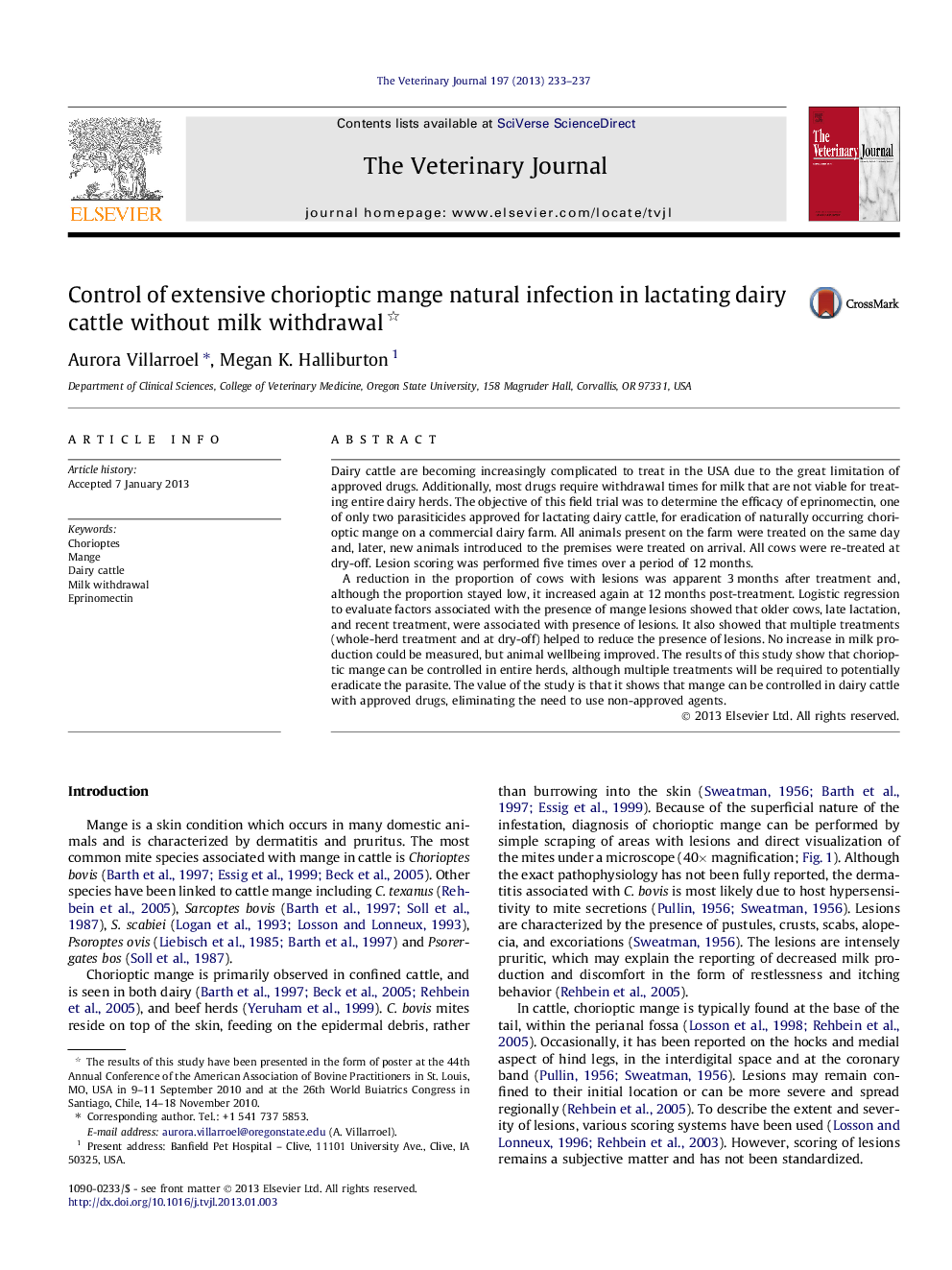| Article ID | Journal | Published Year | Pages | File Type |
|---|---|---|---|---|
| 5798212 | The Veterinary Journal | 2013 | 5 Pages |
Dairy cattle are becoming increasingly complicated to treat in the USA due to the great limitation of approved drugs. Additionally, most drugs require withdrawal times for milk that are not viable for treating entire dairy herds. The objective of this field trial was to determine the efficacy of eprinomectin, one of only two parasiticides approved for lactating dairy cattle, for eradication of naturally occurring chorioptic mange on a commercial dairy farm. All animals present on the farm were treated on the same day and, later, new animals introduced to the premises were treated on arrival. All cows were re-treated at dry-off. Lesion scoring was performed five times over a period of 12Â months.A reduction in the proportion of cows with lesions was apparent 3Â months after treatment and, although the proportion stayed low, it increased again at 12Â months post-treatment. Logistic regression to evaluate factors associated with the presence of mange lesions showed that older cows, late lactation, and recent treatment, were associated with presence of lesions. It also showed that multiple treatments (whole-herd treatment and at dry-off) helped to reduce the presence of lesions. No increase in milk production could be measured, but animal wellbeing improved. The results of this study show that chorioptic mange can be controlled in entire herds, although multiple treatments will be required to potentially eradicate the parasite. The value of the study is that it shows that mange can be controlled in dairy cattle with approved drugs, eliminating the need to use non-approved agents.
